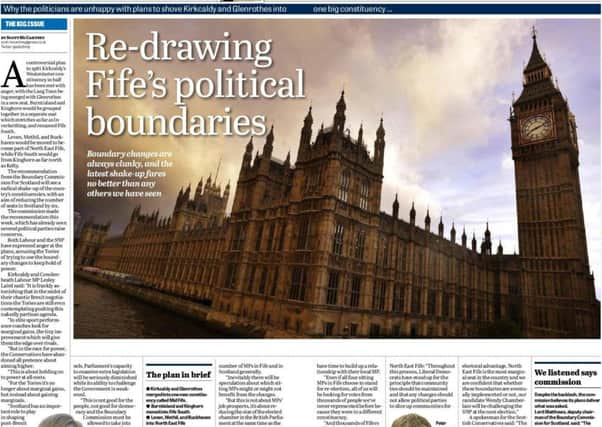Fife's clunky boundary changes need more work done


The outcome of the 2018 re-structuring, which will see six fewer MPs from Scotland at Westminster, follows the same clunky path ploughed by its predecessors.
Towns are bolted together, while others are shoved into constituencies which stretch so far they are not even a dot on the horizon.
Advertisement
Hide AdAdvertisement
Hide AdClearly, the Boundary Commission cannot please everyone – but should they also be allowed to deliver a plan which displeases the majority?
It says its work is done. MPs beg to differ, and they have the final word. Even turkeys don’t vote for Christmas, so there is every chance this exercise could be kicked out and then possibly even forgotten amid the mayhem of Brexit.
In terms of Fife, it is good to see the region retaining four constituencies, even if the composition of them is a tad bewildering.
Lumping Kirkcaldy and Glenrothes – two of the region’s main towns together – feels wrong.
Advertisement
Hide AdAdvertisement
Hide AdThey have traditionally had their own MPs– something we believe should continue.
It does make the seat rather tasty in terms of who wins.
Labour, which only just reclaimed Kirkcaldy, will be looking nervously at the solid SNP heartland of Glenrothes and crunching the numbers very carefully before it makes any confident assertions it could win Mid Fife.
Will the changes see MPs switching seats? Very possibly, but it isn’t really about any individuals – the people still have the final say, and, in the current climate, any outcome is possible. Just ask SNP and Labour who both came up short in the Inverkeithing by-election as the Tories won another local council seat.
The boundary changes still need parliamentary approval.
The feedback, so far, would suggest, that may be a tricky passage through Westminster.